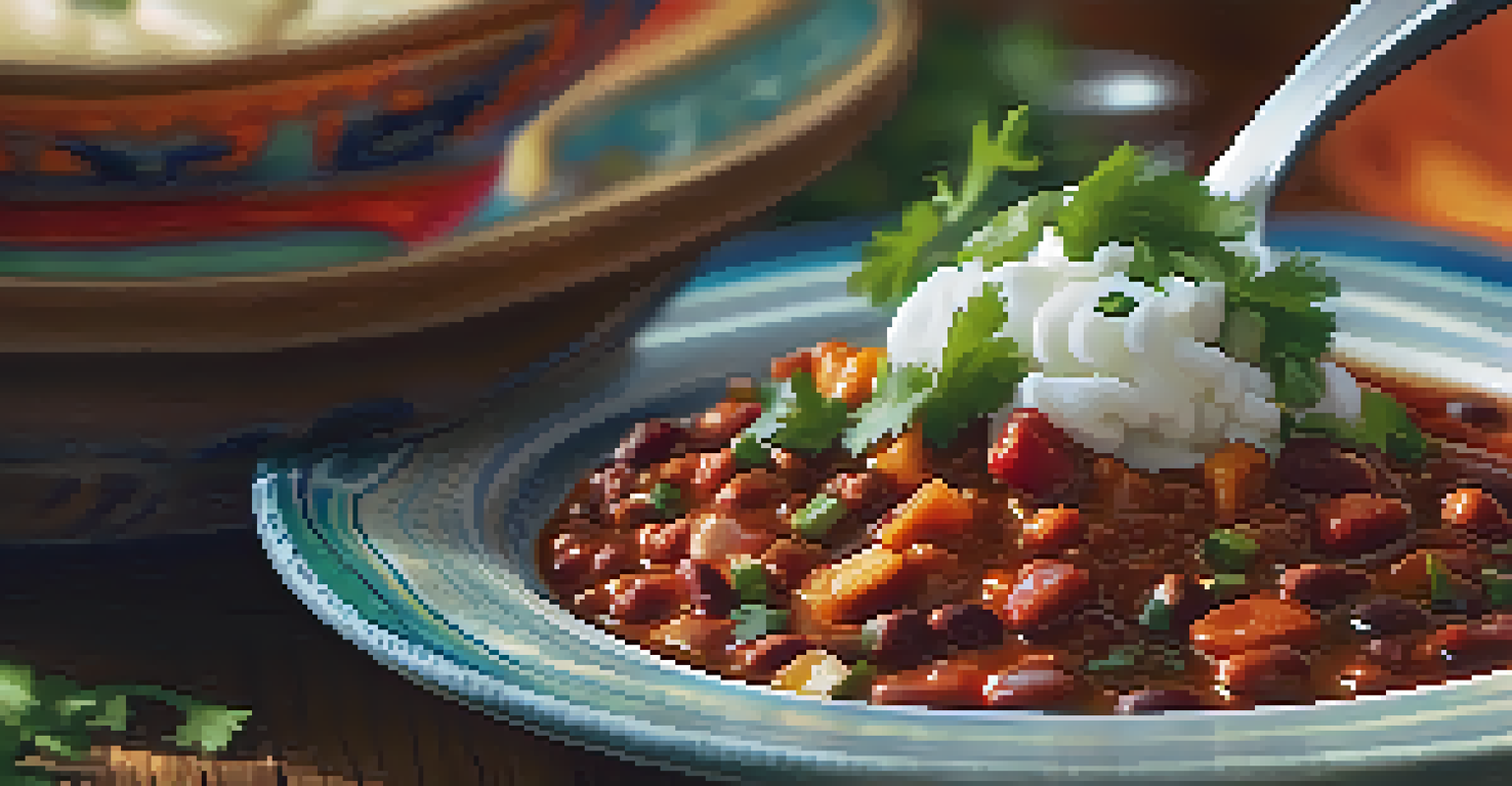Decoding Serving Sizes on Vegetarian Product Labels

Understanding Serving Sizes: Why They Matter
Serving sizes are more than just numbers on food labels; they guide us on how much to eat. For vegetarians, knowing these sizes is crucial to ensure a balanced intake of nutrients. A typical serving size can vary significantly depending on the product, so it’s essential to pay attention to these details.
You are what you eat, so don't be fast, cheap, easy, or fake.
For instance, a serving of vegetarian chili might be one cup, while a serving of a plant-based burger could be just one patty. This variation can affect how we perceive portion control and calorie intake. Understanding these nuances helps in making informed dietary decisions and maintaining a healthy lifestyle.
Moreover, recognizing serving sizes can prevent overeating and help manage weight effectively. By sticking to recommended servings, vegetarians can enjoy a variety of foods while still meeting their nutritional needs.
How to Read Serving Size Information
When you look at a product label, the serving size is usually found at the top of the nutrition facts. It may be listed in cups, pieces, or grams, depending on the product type. Understanding this information is the first step to accurately interpreting the rest of the label.

For example, if a label states the serving size is 30 grams, you should weigh out that amount to get a true sense of what a serving looks like. This attention to detail ensures you’re not inadvertently consuming more or less than you think. It’s like using a measuring cup for a recipe; precision leads to better results.
Understanding Serving Sizes Matters
Recognizing serving sizes helps vegetarians make informed dietary choices and maintain a balanced intake of nutrients.
Keep in mind that serving sizes can be misleading. Some products might package multiple servings in a single container, so it’s crucial to check how many servings are included to avoid confusion.
The Role of Daily Values in Serving Sizes
Daily Values (DVs) provide context for the nutrients within a serving size. These values indicate how much a nutrient in a serving contributes to a daily diet based on a 2,000-calorie intake. For vegetarians, understanding DVs can help ensure they’re getting essential nutrients, especially protein, iron, and calcium.
The first wealth is health.
For instance, if a vegetarian protein bar has 20% of your daily iron requirement in one serving, that’s a significant contribution. Tracking these values can help vegetarians identify foods that help meet their nutritional goals. It’s like having a roadmap for your diet; knowing where you stand can guide your food choices.
However, remember that individual needs may vary. Factors such as age, gender, and activity level can influence how many nutrients you require daily.
Common Misconceptions About Serving Sizes
Many people believe that a serving size is synonymous with a portion size, but this isn’t always true. A portion is what you choose to eat, which could be more or less than the recommended serving size. This misunderstanding can lead to unintentional overeating, particularly with vegetarian snacks that may seem healthy.
For example, a serving of hummus might be two tablespoons, but you might find yourself scooping out half a cup while snacking. This discrepancy can significantly increase calorie intake, negating the benefits of choosing a vegetarian option. It's essential to be mindful of these differences.
Reading Labels is Key
Accurately interpreting serving sizes and Daily Values on product labels ensures you consume the right amounts and nutrients.
Another common misconception is that larger serving sizes mean better value. While it might seem appealing to buy a family-sized bag of veggie chips, it can lead to mindless munching. Instead, consider buying smaller packages to help manage serving sizes more effectively.
Factors Influencing Serving Sizes for Vegetarians
Several factors can influence recommended serving sizes, including the type of food and its density. For example, a serving of leafy greens is much larger by volume than a serving of nut butter, which is denser and higher in calories. Understanding these differences is crucial for vegetarians to create balanced meals.
Cultural practices and personal dietary needs also play a role in how we perceive serving sizes. A vegetarian might eat larger servings of grains during a meal, depending on their energy needs or cultural background. Recognizing these influences can help individuals tailor serving sizes to fit their lifestyle.
Ultimately, it’s about finding a balance that works for you. Listening to your body and being aware of how different foods affect your hunger and energy levels can guide your serving size decisions.
Portion Control Strategies for Vegetarians
Portion control doesn’t have to be a daunting task; it can be as simple as employing a few strategies. One effective method is using smaller plates and bowls to help visually trick your brain into feeling satisfied with less food. This approach is particularly useful for vegetarian meals, which can often be very filling.
Another strategy is to pre-portion snacks and meals. For instance, divide a large bag of mixed nuts into smaller containers to avoid mindlessly munching straight from the bag. This practice encourages moderation and helps in maintaining healthy serving sizes without feeling deprived.
Portion Control Strategies
Employing simple portion control techniques can help vegetarians manage their serving sizes without feeling deprived.
Lastly, practice mindful eating by focusing on your food during meals. Chewing slowly and enjoying each bite can enhance your eating experience and allow your body to recognize when it’s full, reducing the chances of overeating.
Conclusion: Making Informed Choices
Decoding serving sizes on vegetarian product labels is essential for making informed dietary choices. By understanding how to read labels and recognizing the importance of serving sizes, vegetarians can better manage their nutrition. This knowledge allows for a more balanced and satisfying diet, tailored to individual needs.
Remember, serving sizes are not one-size-fits-all; they should reflect your dietary goals and lifestyle. Experiment with different foods and portion sizes to find what works best for you, and don’t hesitate to adjust based on your hunger levels and nutritional needs.

Ultimately, being informed about serving sizes empowers you to enjoy a diverse vegetarian diet while ensuring you get the nutrients your body requires. Embrace the journey of healthy eating, and let serving sizes guide your choices.